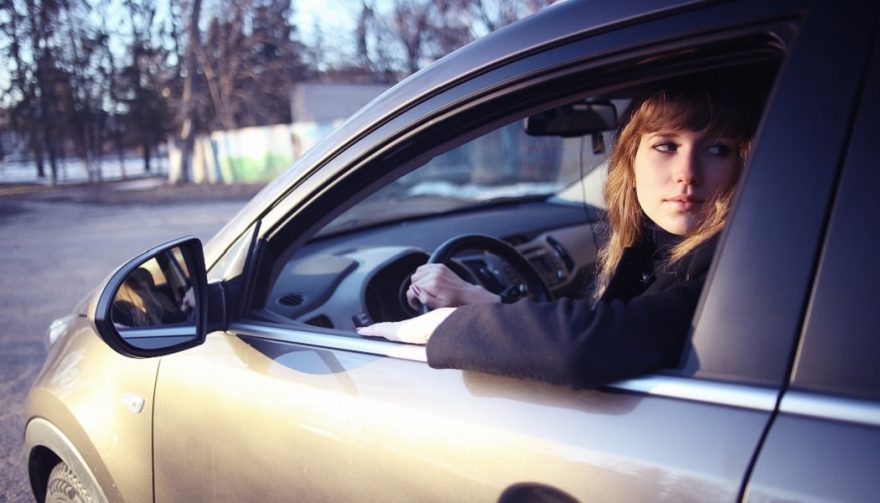
Being calm and courteous are good rules of the road.
Driving Tips for Beginners: Lessons for the Road
These are a few simple and basic driving tips for beginners. Learning to operate a vehicle safely can be difficult in itself. It can be even more frustrating, and dangerous, when you have to interact with other drivers on the road.
These driving tips for beginners go beyond basic instructions for driving a car. They focus on everyday situations new drivers will encounter.
From what to do when a light turns green to handling road rage, there are subtle lessons a new driver needs to learn. Here are a few driving tips for beginners.
Stay Alert Stopped at a Red Light
Just because you’re not moving for a moment doesn’t mean you can take a break. When you’re stopped at a red light, it isn’t a time to read text messages or fiddle with the radio. You need to pay attention to everything that’s happening around you.
When the light turns green, don’t immediately proceed through the intersection. Another driver, for whatever reason, may fail to honor their red light. You don’t want to get hit in the side by a driver running a red light.
Dealing with Blind Spots
Blind spots are a tricky challenge, even for people who have been driving for a long time. Rear view mirrors don’t show everything behind your car, and they especially don’t show vehicles traveling just slightly behind you in the adjoining lanes. This is especially true for motorcyclists.
Adjust the two outside mirrors to pick up only a slight portion of your car’s rear fenders. The rest of the mirrors should reflect the lanes to your left and right.
When you’re changing lanes, always remember that a car could be in your blind spot. You need to do a quick shoulder glance before veer into another lane. Always use your turn signal when changing lanes.
Also, get used to the fact that you may be in another car’s blind spot as you pass. Don’t linger in a lane next to a car as you pass it. Accelerate on by.
Dealing with Road Rage
For some reason, driving can be a rage-inducing act even for the most timid people. When you start driving, you’ll have to deal with your own temper and other drivers’. It’s one of the most important driving tips for beginners to learn.
You can’t control other drivers’ feelings, but you can control your own. No matter what happens, stay calm and don’t lose your cool.
Now, if for whatever reason another driver is angry with you, there are a few things you can do.
If an erratic driver cuts you off in traffic and makes you angry, just let them go. Slow down and let the crazy driver get far ahead of you. Whatever you do, don’t engage the other driver in any way.
If you’re in traffic and an angry person jumps out of their can and approaches your car in stopped traffic, this is a dangerous situation. Lock your doors (they should always be locked anyway), roll up your windows and dial 911. Hold the phone high and let them see you dialing the police.
If an angry driver begins following on the road, just keep moving. Drive toward the nearest police station. You can also call the police and tell them the situation.
Drivers Will Invade Your Right of Way
Anticipating accidents is usually the best way to avoid interactions with other cars. If you know what, and where and when, to look for possible incidents, you’ll be a lot safer.
Accidents usually happen at intersections. It’s a lot less likely that two vehicles traveling on an open road will bump into each other. Exceptions certainly exist, but most mishaps occur where traffic from different directions crosses each other’s paths.
Be careful early in the morning. Other drivers will be in a hurry and are less likely to be mindful of other drivers. When you see a car backing out of the driveway, don’t assume they will stop. The same goes for stop signs.
Merging into highway traffic can be challenging for new drivers. The on ramps that lead on to interstate highways are called acceleration lanes. Cars are supposed to speed up in these lanes, to match the speed of vehicles traveling on the interstate. Don’t expect drivers to slow down and make room for cars to enter.
When driving on a highway leave one car length for every 10 miles per hour between you and the vehicle you are following. So, at 60 mph you would have six car lengths between you, almost enough room to brake suddenly or swerve if need be.
Turn Your Headlights on at Dusk
The sun is low on the horizon and is blinding you, even through your sunglasses. You are tired from a long day at school or work, and in a hurry to get home. It’s all a recipe for disaster.
Make yourself easier to be noticed, and turn your headlights on at dusk. You should also always do this during bad weather or driving in snow.





